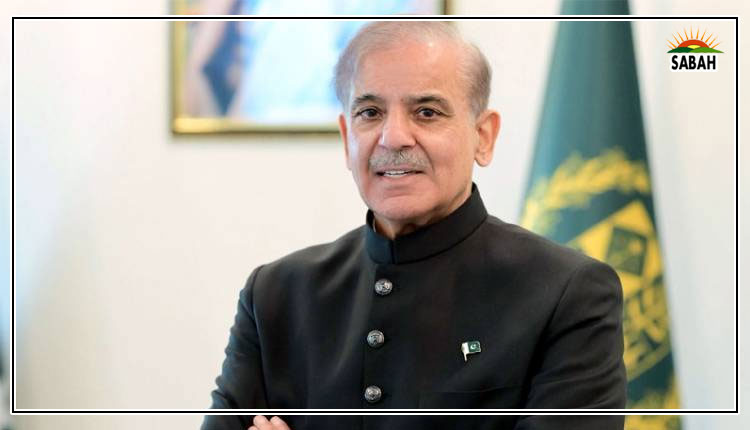Stuck in the Stone Age…By Mustafa Tariq Wynne
Pakistan’s governance system seems proper stuck in the first half of the 20th century. While much of the world has embraced devolved governance and digital public service delivery mechanisms, citizens in Pakistan are still subjected to outdated processes that demand their physical presence and social connections to accomplish even the most basic tasks.
To illustrate, in whichever part of Pakistan you live, the process of seeking administrative assistance often feels like stepping back into the 1950s. People are forced to wait for ‘khuli kacheris’ held by district administration officials, and police chiefs to have their petitions heard. These sessions are irregular, and residents can wait for weeks or months without any certainty about when their concerns will be addressed.
The inefficiency extends beyond district administration offices. Citizens must also visit their local MNA or MPA’s ‘dera’ (which promotes the politics of patronage) to request intervention, often in the form of a phone call to government representatives, to push their cases forward. The mere act of getting a basic service often relies on the influence of these public figures, reinforcing a toxic and dehumanising cycle of patronage.
The struggle does not end there. Citizens must often make repeat visits to the offices of elected representatives and government officials, sometimes traveling from peripheral, remote areas to provincial and federal capitals. They are forced to wait for hours, sometimes days, outside these offices – only to find their matters delayed or disregarded entirely. The same pattern persists at district administrative offices, where long queues and endless red-tapism further alienates the public.
This system is a prime example of inefficiency at every level of government, whether federal, provincial, and local. In an era where digital interventions have revolutionised service delivery in many parts of the world, Pakistan remains stuck in a bureaucratic quagmire, efficient in tying a knot on the files covers and then putting them on a shelf, not to be touched.
It’s not that digital service delivery mechanisms don’t exist, they do. Pakistan’s Citizens’ Portal was introduced to address public complaints digitally, yet people still queue outside government offices for hours, which goes to show the inadequacy of the platform and a lack of trust in digital interventions. This shows that simply launching initiatives isn’t enough, their continuation, implementation and outreach must improve, and power must be devolved to the smallest administrative units to make services truly accessible.
Bangladesh’s Access to Information (a2i) programme provides a peak example of how this can be done. A key feature of the a2i programme is the Union Digital Centers with approximately 9000 centres across the country and is a public-private partnership model designed to bring essential services to rural and urban communities. These centres are managed by two local entrepreneurs, one male and one female to ensure inclusivity, provide close to 300 services, including birth registration, land records, utility payments and telemedicine.
Operating on a self-sustaining revenue model, the entrepreneurs earn through nominal service fees rather than government salaries, while the government provides initial infrastructure, training, and internet support. This model not only improves access to services but also fosters digital literacy, promotes women’s empowerment and creates employment opportunities. The UDCs show how decentralised and community-driven digital solutions can make public services more efficient and inclusive.
Just to give a perspective on how decentralised Bangladesh’s public service delivery mechanism is, Pakistan’s largest bank has about 1600 branches all over the country, with a trained workforce in thousands offering banking, trade and some utility services. The a2i in contrast has about 9000 branches across Bangladesh, facilitating citizens with close to three hundred services, that’s how big and deep their public service delivery goes.
Pakistan’s governance remains trapped in bureaucratic processes that alienate its citizens and allow middlemen to thrive. Students, for example, still endure long queues at the IBCC, HEC, and MOFA offices for degree verification, often paying ‘agent fees’ to expedite their cases.
And it’s not as though the political and bureaucratic elite are unaware of digital tools to address public grievances. They are very familiar with the power of online platforms but these are often used for self-glorification. From posting TikToks flaunting their official protocol entourages to making dramatic videos of raids and visits, they demonstrated how digital platforms can be wielded for self-glorification, selling CSS courses and shout outs to businesses rather than public service delivery. If new and improved digital means can be used to boost their image and another source of income, the same can surely be used to deliver basic services to the people.
Why, in the digital age, do Pakistan’s governance mechanisms remain so antiquated?
While other nations implement e-governance models that allow citizens to address their concerns online, Pakistanis must endure outdated systems that seem built to test patience and make their lives more miserable than they already are rather than provide solutions.
The culture of having long queues of desperate citizens outside offices must end. The political rhetoric around reforms and better service delivery will remain hollow unless it addresses these deep-rooted issues. True reform requires moving beyond mere promises and focusing on the modernisation of public service delivery mechanisms. This means adopting digital governance, decentralising power, and reducing the reliance on intermediaries for basic services.
Governance must evolve to meet the needs of the people, not the other way around. Until then, Pakistan’s governance will remain trapped in the past, leaving its citizens to bear the burden of a system designed to serve only those with power and connections to get their work done.
The writer is an advocate for youth
COURTESY THE NEWS












